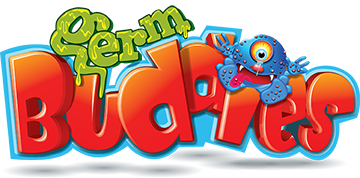STREPTOCOCCUS

Known as: STREP A OR STREP B most commonly known
About: Gram Positive Bacteria
Microscope: Chain or string of cells that can easily bend or twist. Cell division occurs along a single axis so instead of making clusters of cells, they grow side by side.
What can it do: Streptococcus is known as two groups Strep A and Strep B. Strep A is found on skin and inside the throat, hence the name Strep throat and Strep B usually live inside the digestive system and in the birth canal of women which is why newborn babies can be seriously infected. Types of infections by Strep A, include skin infections like impetigo or cellulitis as well as ear, nose and throat infections. Strep B is the form of Streptococcus that most people have developed an immunity to and so apart from newborn babies, it is rare for a person to become infected by Strep B. In newborn babies, the bacteria causes an infection which causes breathing difficulties, and even pneumonia.
Help: Strep A and B need to be identified by a doctor. Minor Strep A infections may clear up alone, with rest and treating symptoms such as keeping hydrated and reducing fever etc., but a more invasive Strep A infection will need emergency medical treatment and is very dangerous and should not be left untreated. Antibiotics may be given intravenously and if the infection is very serious sometimes blood transfusions are needed to help.
Those people who have a weak immune system are very at risk if they contract Strep A and may die from this type of infection, so it needs aggressive and immediate treatment. As Strep B mainly affects newborn babies, it is common when there is a history of a mother contracting Strep B infection, she can be given antibiotic treatment prior to the baby's birth which will pass to the baby and may help to assist the baby's immune system to fight the infection as soon as it is born. It is estimated that 1 in 10 babies who contract a Strep B infection will die from the infection. Doctors can confirm if the infection is present by taking blood tests and urine samples to test.
Infectious rating: As with many infections that concern the throat, eyes and ears, Strep A is infectious and can be passed from person to person. Strep B is passed mainly from a mother to a child during birth and because the baby's immune system is not developed, they are very easily overwhelmed by this infection.
I feel sick: Strep A can make you feel very unwell, depending on the part of the body that is affected. Throat infections Strep throat can cause discomfort on swallowing, swollen glands, and a fever, pus on the tonsils, headache, nausea, abdominal pain, rash and muscle pain.
Skin symptoms: Strep A can cause impetigo a highly infectious skin condition which can cause blistering around the mouth, nose and trunk/legs. A deeper infection called cellulitis can also affect the legs.
Airway symptoms: Strep A can cause sore throat and if it reaches a stage of a severe infection may even cause pneumonia. Strep B can quickly lead to pneumonia in newborn babies.
Tummy/intestine symptoms
Strep A can cause abdominal pain, nausea, vomiting and muscle pain.
GEOGRAPHY AND STATISTICS
Statistics indicate that some forms of streptococcus are a major global health concern. Up to 800,000 children under the age of 5 years die from streptococcus infections, mostly children in poor countries where access to emergency health care is limited. The most common form of infection and cause of death is through pneumonia.
